Abstract
Most villagers in north-east Thailand carry water to their homes and store it in separate containers depending on its subsequent use. In one village, information on water use was collated with the bacteriological quality of stored water, water sources and fingertip-rinses. Stored water quality was a function of water-related activities rather than quality at source (P less than 0.0001). Specifically water used for toilet, washing dishes and cooking-related activities was much more contaminated with faecal bacteria than that used for drinking and cooking. Salmonella spp. was significantly more common in water used for washing dishes than drinking (P less than 0.05). Escherichia coli contamination of fingertip-rinses was strongly associated with the individual's activity prior to testing (P less than 0.0001); child care, food and water-related activities produced much higher levels of fingertip contamination than others. Dirty utensils used for cooking and eating were usually left to soak and faecal bacterial growth occurred in this grossly contaminated soak-water. Cross-contamination via water handling was the main mechanism of stored water pollution. These results were used to develop a hygiene intervention study presented in a companion paper.
Full text
PDF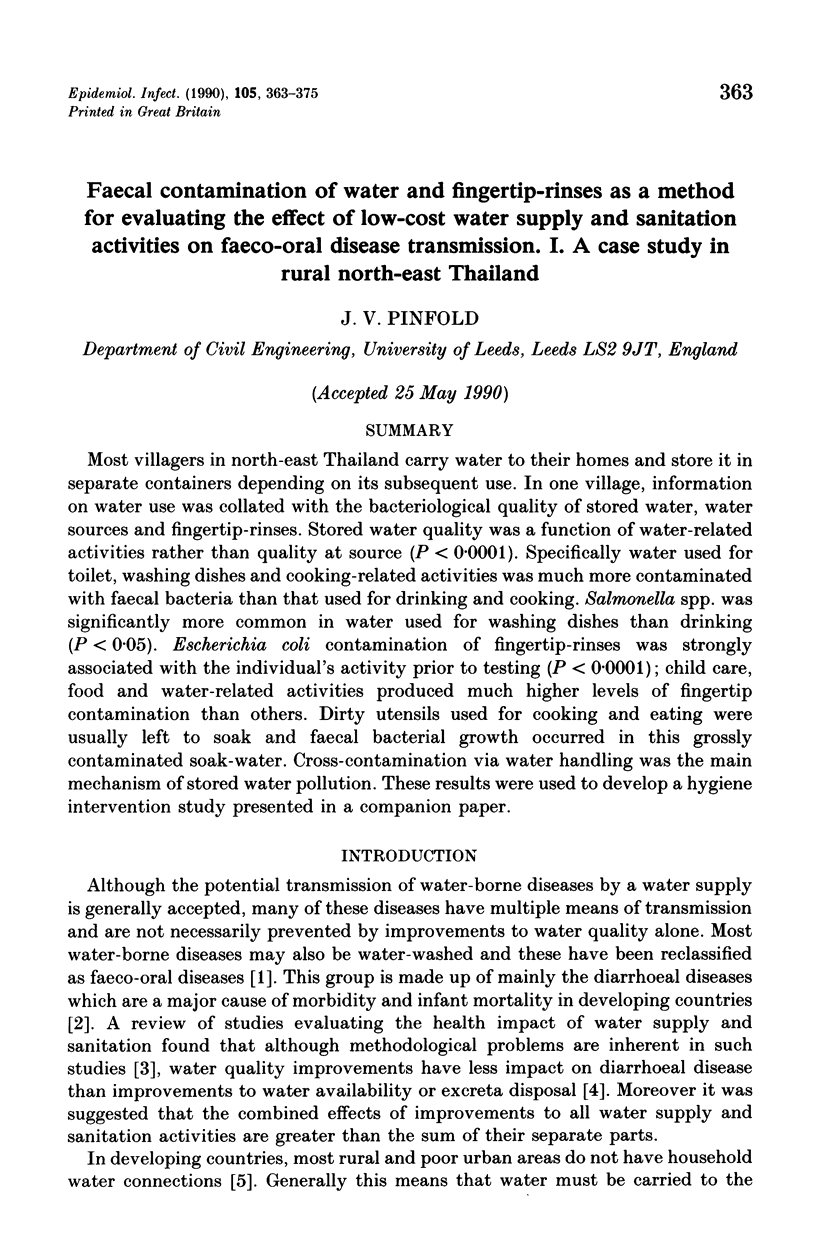
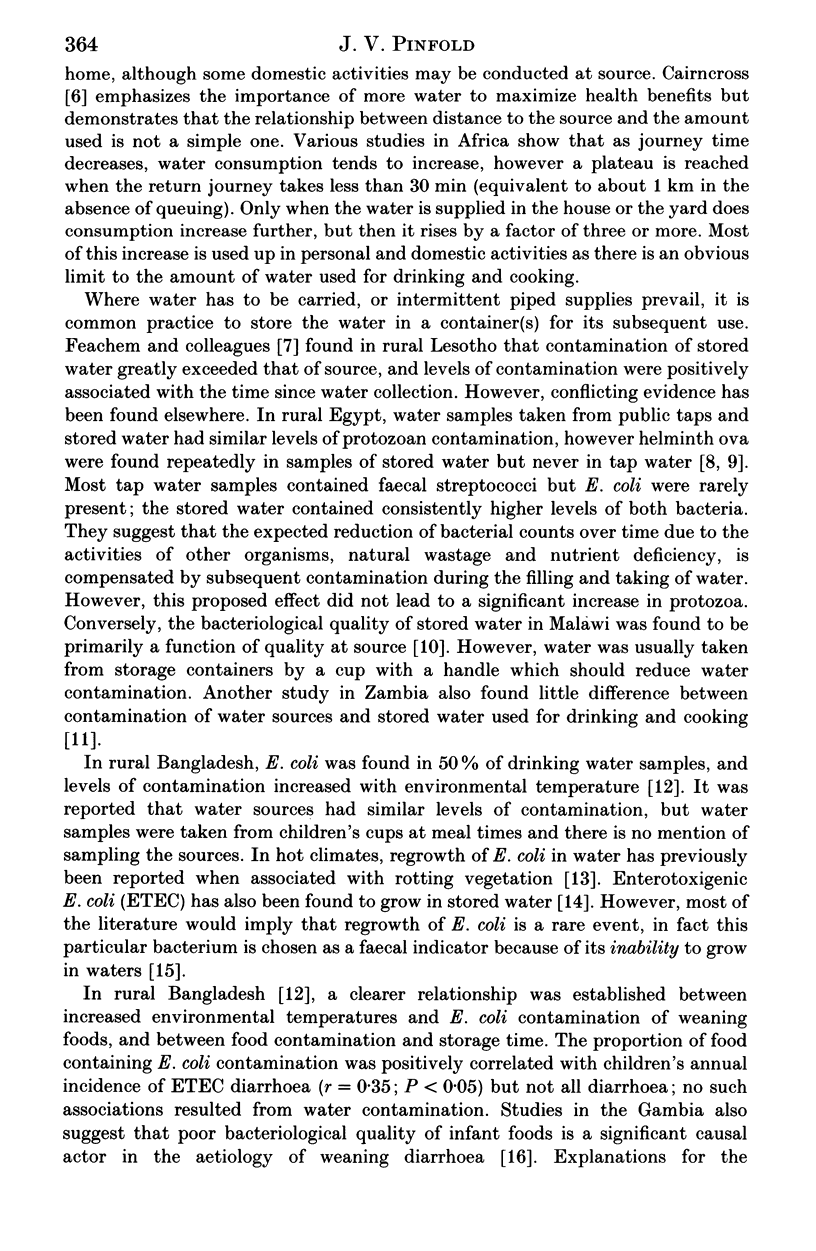

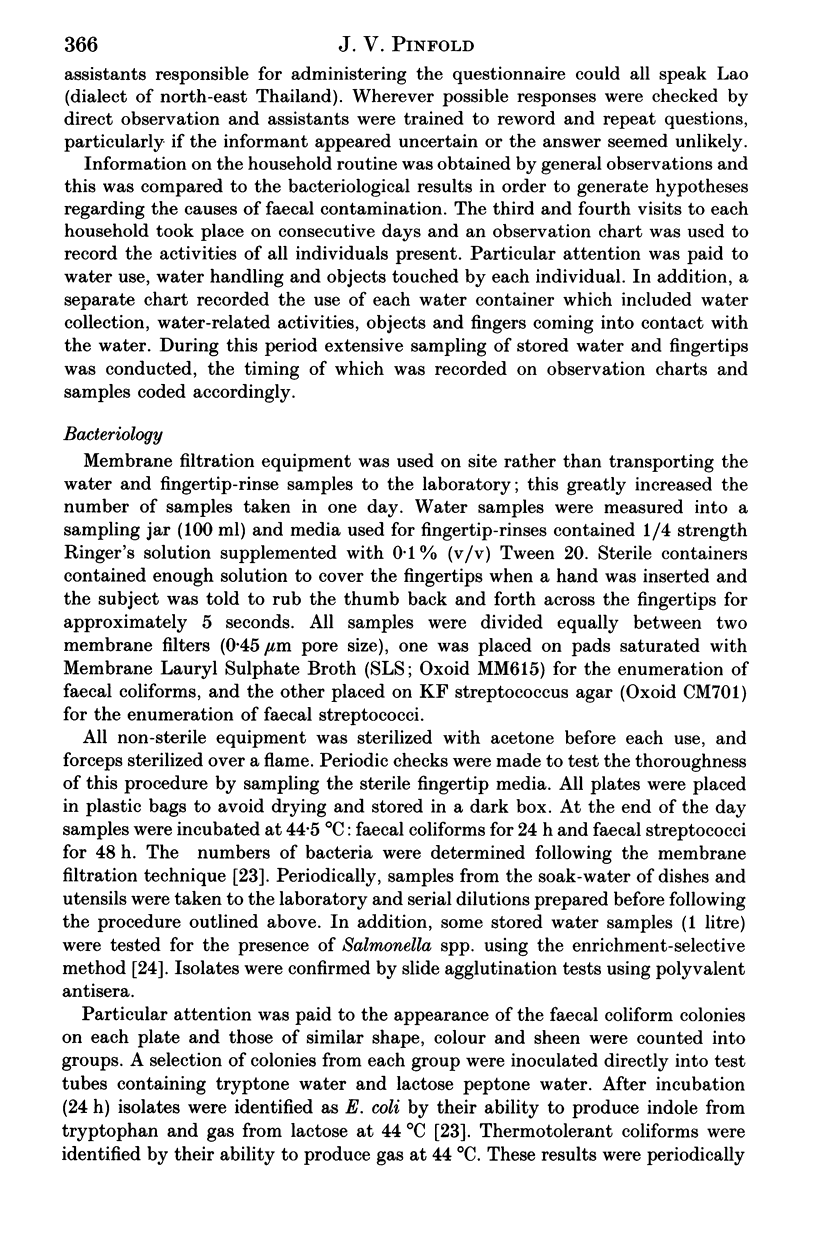
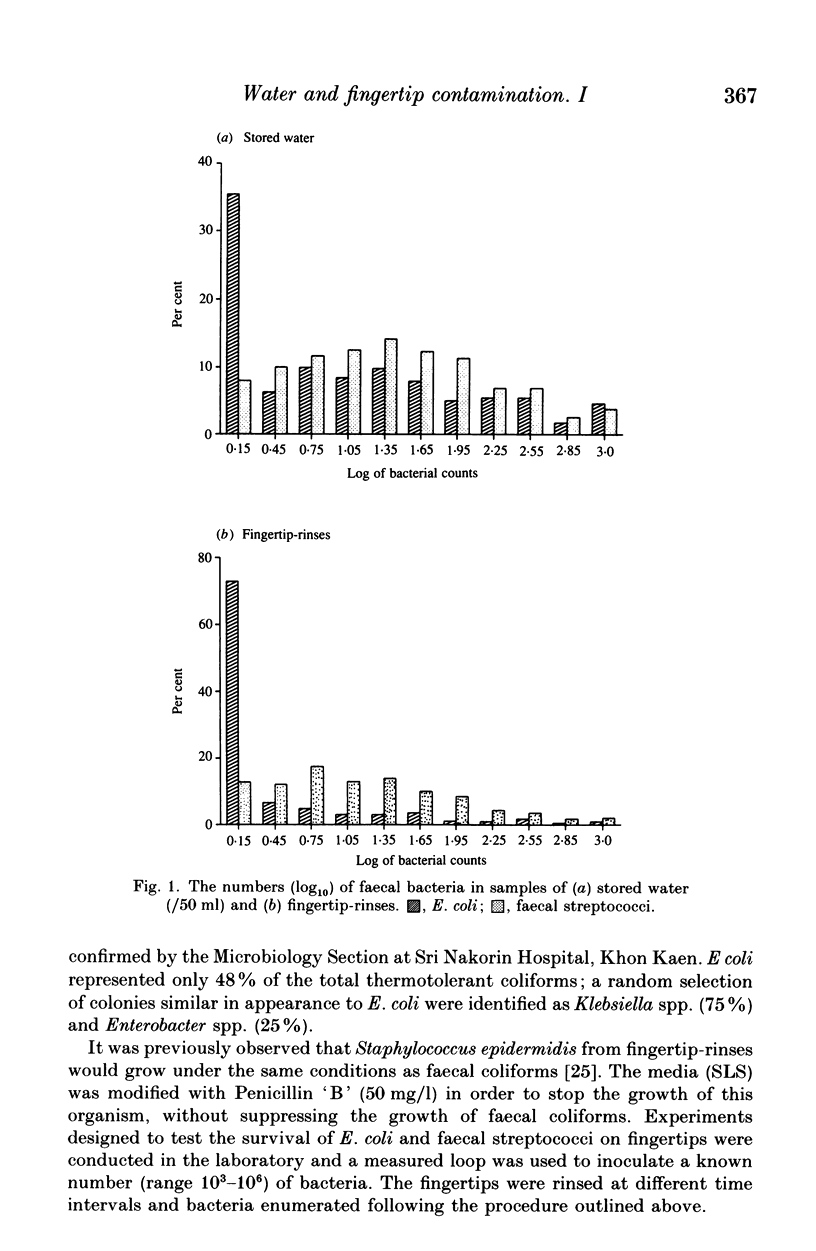
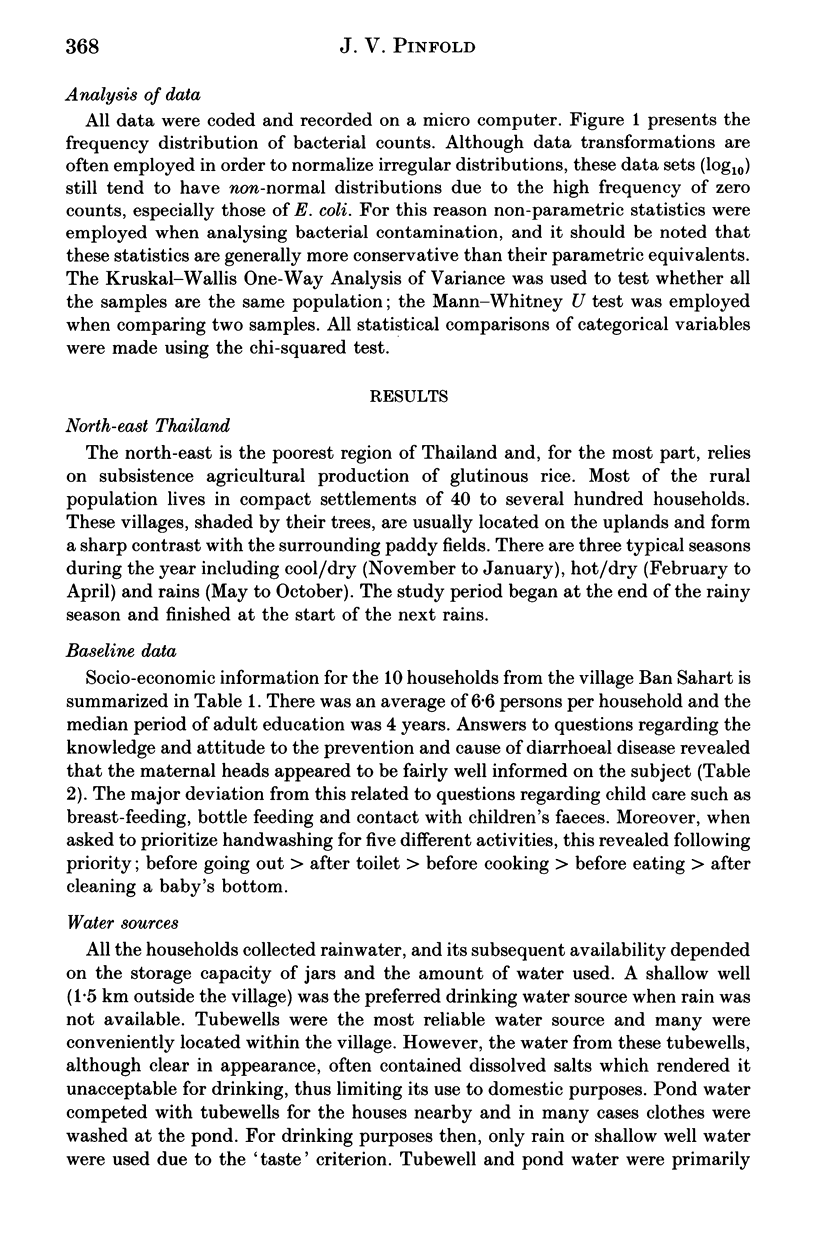

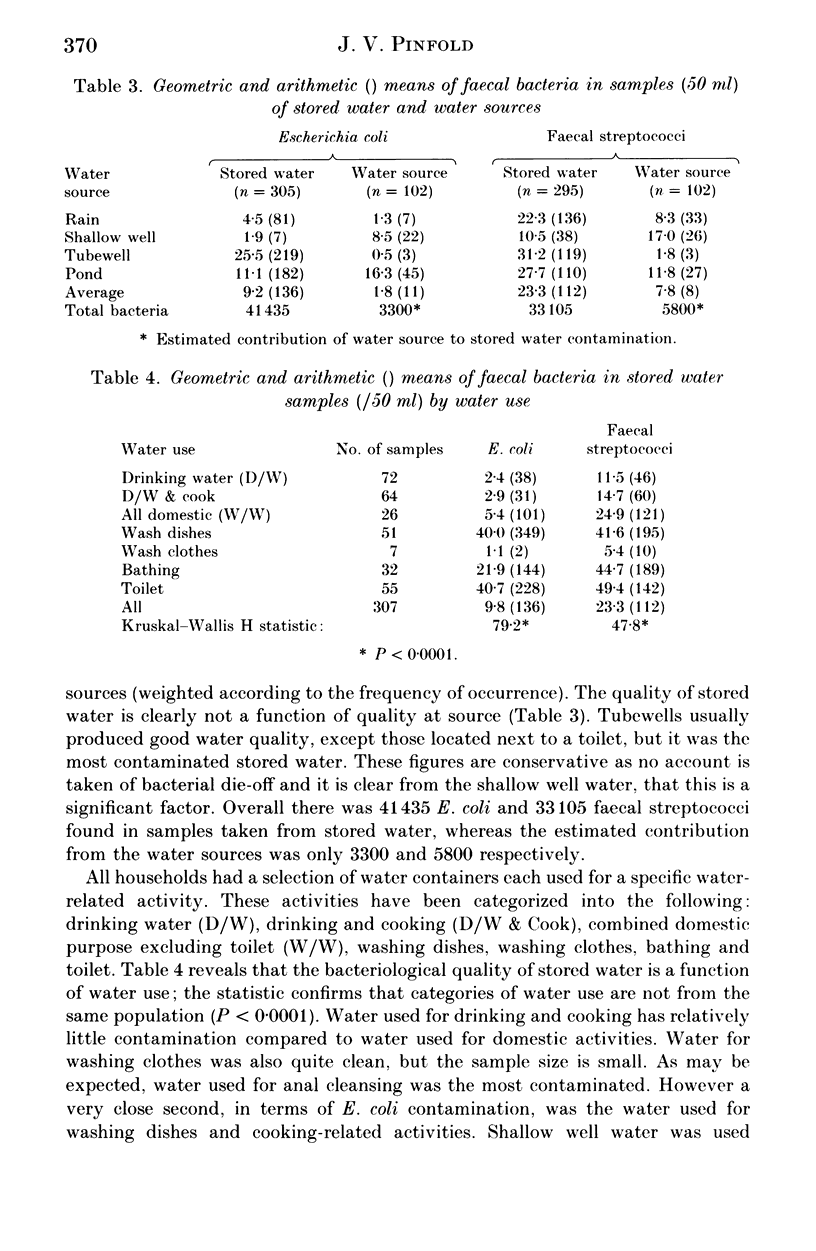
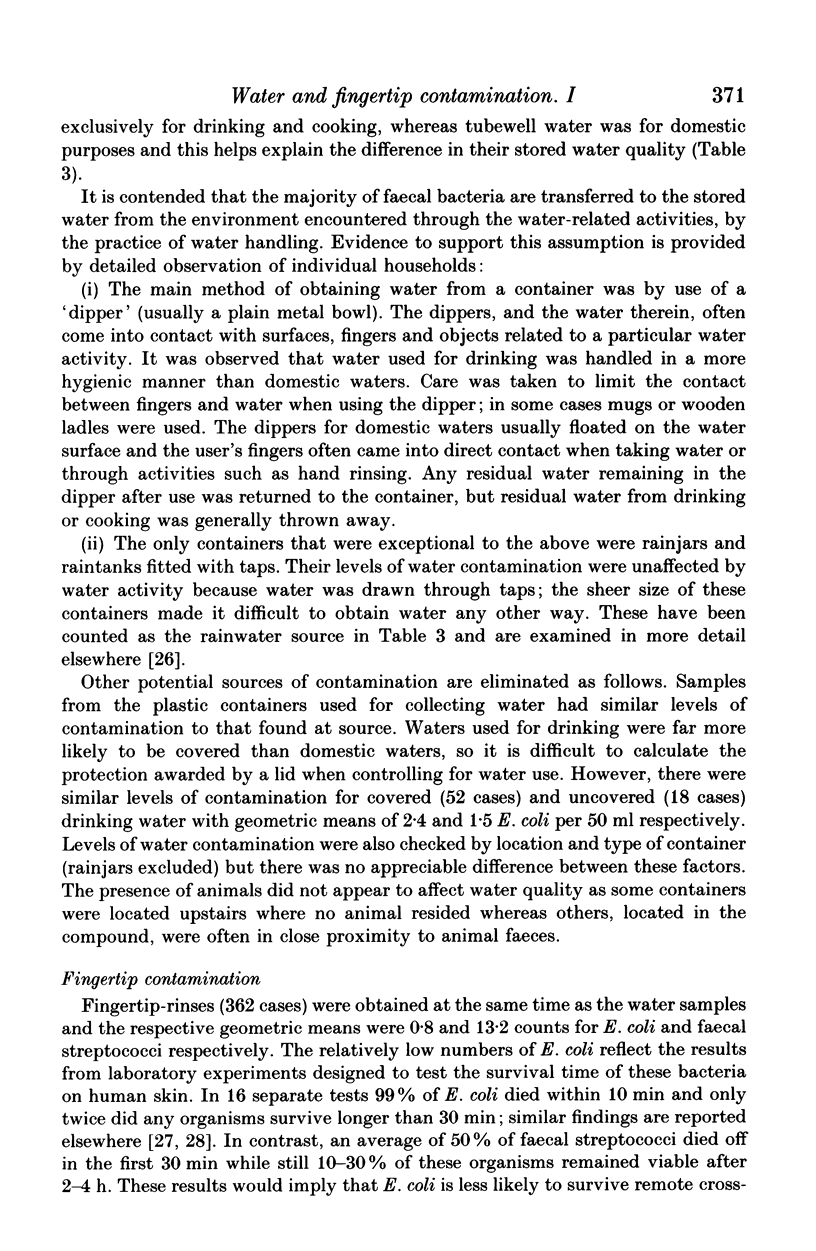

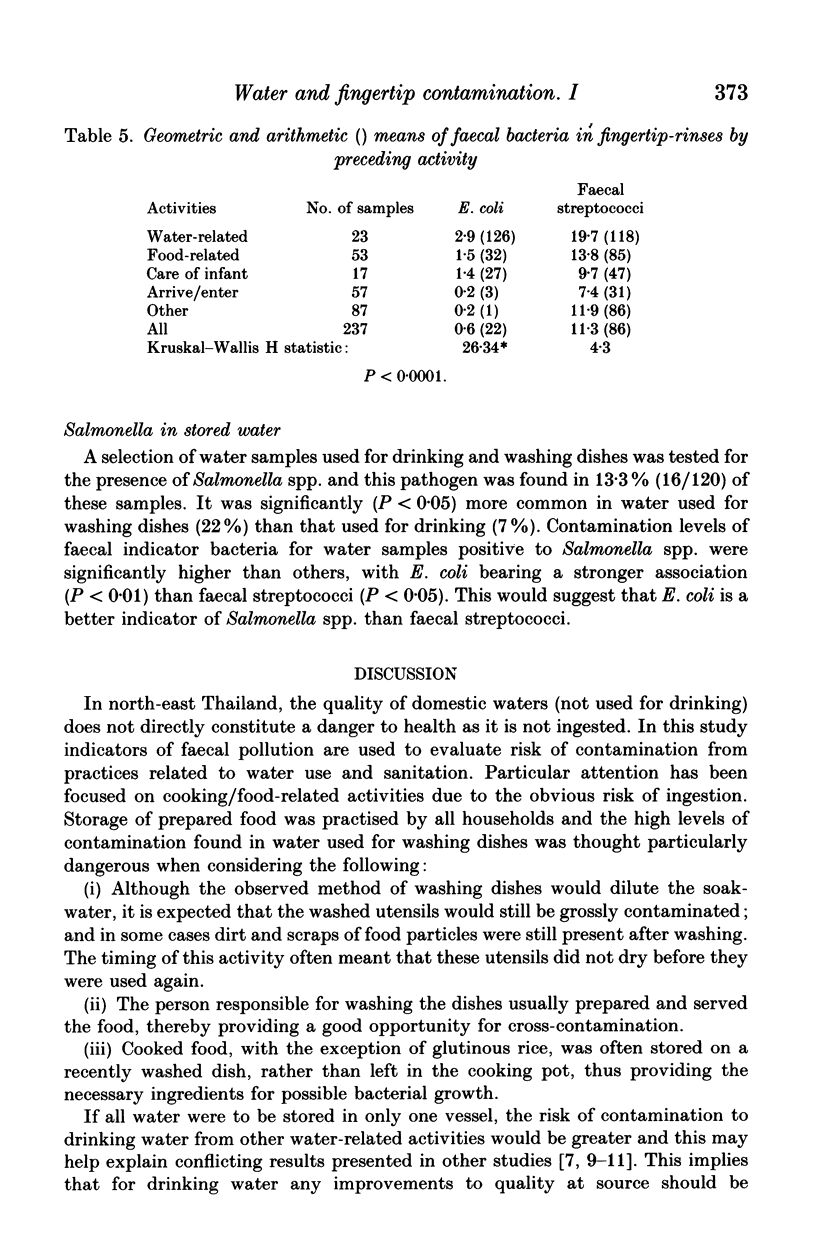
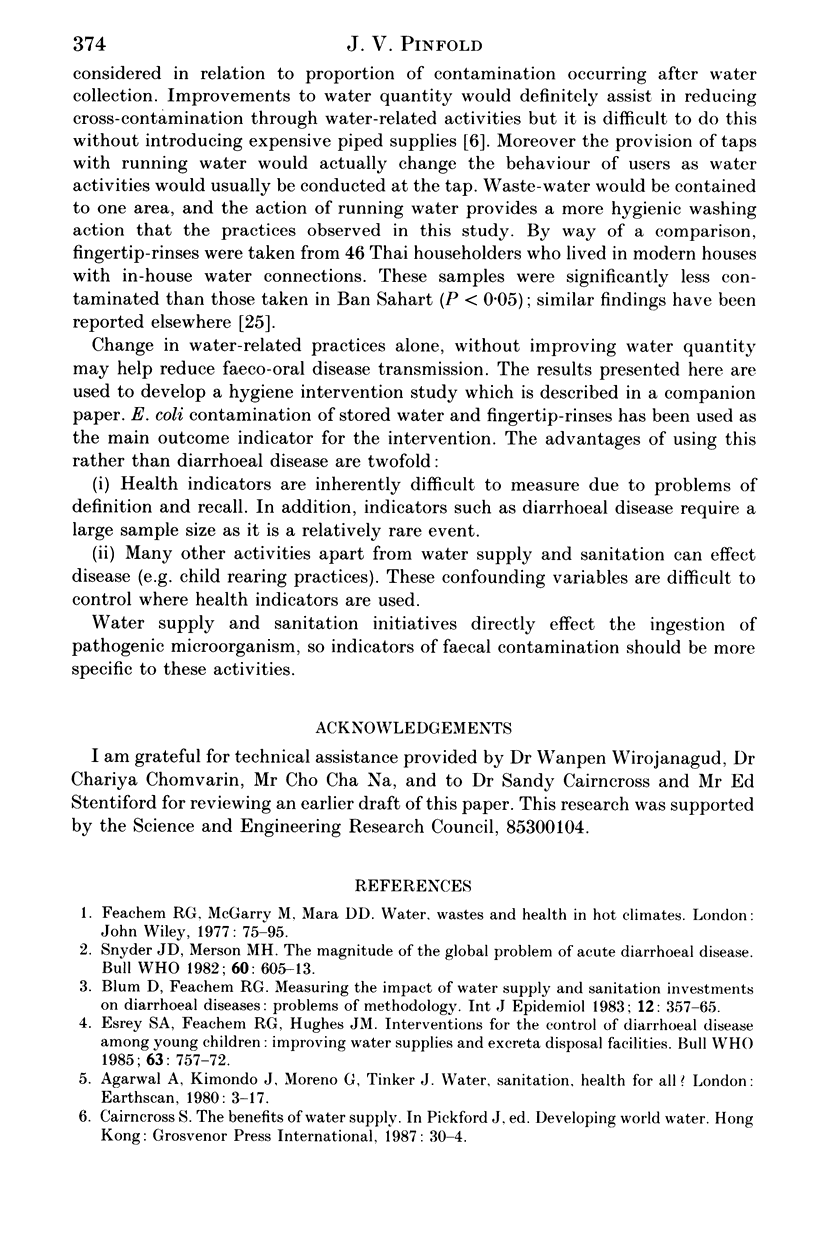
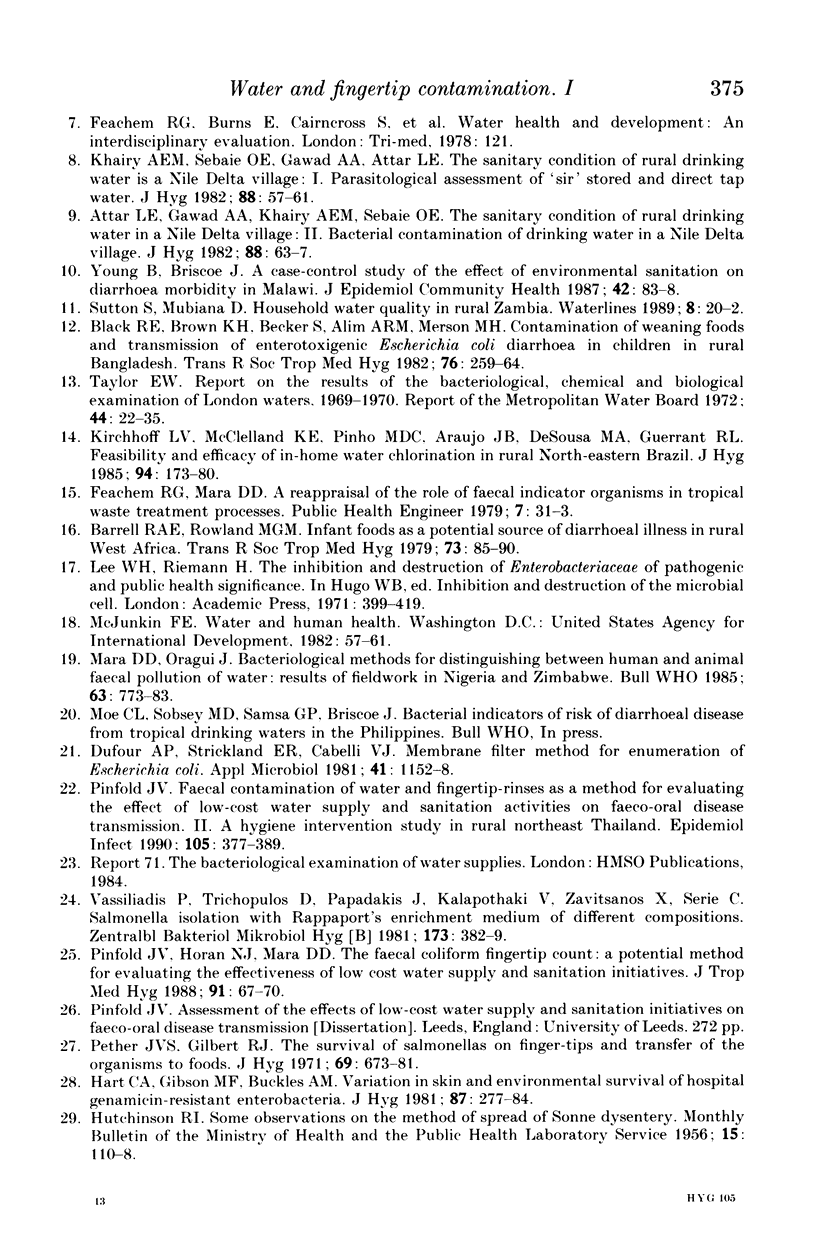
Selected References
These references are in PubMed. This may not be the complete list of references from this article.
- Barrell R. A., Rowland M. G. Infant foods as a potential source of diarrhoeal illness in rural West Africa. Trans R Soc Trop Med Hyg. 1979;73(1):85–90. doi: 10.1016/0035-9203(79)90136-6. [DOI] [PubMed] [Google Scholar]
- Black R. E., Brown K. H., Becker S., Alim A. R., Merson M. H. Contamination of weaning foods and transmission of enterotoxigenic Escherichia coli diarrhoea in children in rural Bangladesh. Trans R Soc Trop Med Hyg. 1982;76(2):259–264. doi: 10.1016/0035-9203(82)90292-9. [DOI] [PubMed] [Google Scholar]
- Blum D., Feachem R. G. Measuring the impact of water supply and sanitation investments on diarrhoeal diseases: problems of methodology. Int J Epidemiol. 1983 Sep;12(3):357–365. doi: 10.1093/ije/12.3.357. [DOI] [PubMed] [Google Scholar]
- Esrey S. A., Feachem R. G., Hughes J. M. Interventions for the control of diarrhoeal diseases among young children: improving water supplies and excreta disposal facilities. Bull World Health Organ. 1985;63(4):757–772. [PMC free article] [PubMed] [Google Scholar]
- HUTCHINSON R. I. Some observations on the method of spread of Sonne dysentery. Mon Bull Minist Health Public Health Lab Serv. 1956 Jun;15:110–118. [PubMed] [Google Scholar]
- Hart C. A., Gibson M. F., Buckles A. M. Variation in skin and environmental survival of hospital gentamicin-resistant enterobacteria. J Hyg (Lond) 1981 Oct;87(2):277–285. doi: 10.1017/s0022172400069497. [DOI] [PMC free article] [PubMed] [Google Scholar]
- Khairy A. E., El Sebaie O., Abdel Gawad A., El Attar L. The sanitary condition of rural drinking water in a Nile Delta village. I. Parasitological assessment of 'zir' stored and direct tap water. J Hyg (Lond) 1982 Feb;88(1):57–61. doi: 10.1017/s0022172400069898. [DOI] [PMC free article] [PubMed] [Google Scholar]
- Kirchhoff L. V., McClelland K. E., Do Carmo Pinho M., Araujo J. G., De Sousa M. A., Guerrant R. L. Feasibility and efficacy of in-home water chlorination in rural North-eastern Brazil. J Hyg (Lond) 1985 Apr;94(2):173–180. doi: 10.1017/s0022172400061374. [DOI] [PMC free article] [PubMed] [Google Scholar]
- Mara D. D., Oragui J. Bacteriological methods for distinguishing between human and animal faecal pollution of water: results of fieldwork in Nigeria and Zimbabwe. Bull World Health Organ. 1985;63(4):773–783. [PMC free article] [PubMed] [Google Scholar]
- Pether J. V., Gilbert R. J. The survival of salmonellas on finger-tips and transfer of the organisms to foods. J Hyg (Lond) 1971 Dec;69(4):673–681. doi: 10.1017/s002217240002194x. [DOI] [PMC free article] [PubMed] [Google Scholar]
- Pinfold J. V. Faecal contamination of water and fingertip-rinses as a method for evaluating the effect of low-cost water supply and sanitation activities on faeco-oral disease transmission. II. A hygiene intervention study in rural north-east Thailand. Epidemiol Infect. 1990 Oct;105(2):377–389. doi: 10.1017/s0950268800047968. [DOI] [PMC free article] [PubMed] [Google Scholar]
- Pinfold J. V., Horan N. J., Mara D. D. The faecal coliform fingertip count: a potential method for evaluating the effectiveness of low cost water supply and sanitation initiatives. J Trop Med Hyg. 1988 Apr;91(2):67–70. [PubMed] [Google Scholar]
- Snyder J. D., Merson M. H. The magnitude of the global problem of acute diarrhoeal disease: a review of active surveillance data. Bull World Health Organ. 1982;60(4):605–613. [PMC free article] [PubMed] [Google Scholar]
- Vassiliadis P., Trichopoulos D., Papadakis J., Kalapothaki V., Zavitsanos X., Serie C. Salmonella isolation with Rappaport's enrichment medium of different compositions. Zentralbl Bakteriol Mikrobiol Hyg B. 1981;173(5):382–389. [PubMed] [Google Scholar]
- Young B., Briscoe J. A case-control study of the effect of environmental sanitation on diarrhoea morbidity in Malawi. J Epidemiol Community Health. 1988 Mar;42(1):83–88. doi: 10.1136/jech.42.1.83. [DOI] [PMC free article] [PubMed] [Google Scholar]


